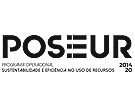



Publication in the Diário da República: Despacho nº 3393/2016 - 04/03/2016
5 ECTS; 1º Ano, 2º Semestre, 60,0 TP , Cód. 9152311.
Lecturer
- Arlindo José Bernardo Dinis (1)(2)
(1) Docente Responsável
(2) Docente que lecciona
Prerequisites
Not applicable
Objectives
At the end of the course, students should know the importance of the principles and rules of the tax system and taxation, as well as the composition and construction of the different calculation bases for taxes on personal income (IRS) and on value added (VAT). ).
Program
1.Taxation and tax system - framework
I. Legal framework
II. Principles of taxation
III. Tax system
IV. Tax law in time and space
V. Fiscal and extra-tax purposes
VI. Taxes and fees
VII. Tax classification
VIII. Tax structure
IX. Level of taxation
2-Personal income tax
I. Constitutional principles and characteristics of the IRS
II. Personal Incidence
1. Taxable Subjects
2.Concept of domicile
III. Territoriality (Residence)
1.Residents/Non-residents
2. Non-habitual residents
IV. Real incidence and calculation of net profit
1.Actual incidence
2. Calculation of net income by income category
V. Tax calculation
1.Income declaration
2.Fees and family quotient
3.Settlement
4. Collection deductions
5.Payment
VI. Additional obligations and guarantees
3-Value added tax
I. Characteristics
II. Incidence
1.Personal impact
2.Personal impact
III. Territoriality rules
IV. Generating factor and tax liability
V. Exemptions
1. Exemptions in internal operations
2. Exemptions on imports
3. Exemptions on exports, operations assimilated to exports and international transport
4. Other exemptions
VI. Taxable value
1. Taxable value in internal transactions
2. Taxable value when importing goods
VII. Fees
VII. Tax clearance
IX. Right to deduction
1.Nature and requirements of the right to deduction
2.Time and way to exercise the right to deduction
3.Exclusion of the right to deduction
4.Partial deduction (Actual and pro-rata allocation method)
5. Regularization of deductions (moveable and immovable assets)
X. Obligations of ICMS taxpayers
XI. Special ICMS Regimes
1.Special exemption regime
2. Special regime for small retailers
3. Cash basis
XII. VAT regime on Intra-Community Transactions (RITI) and Community tax harmonization
XIII. Excise taxes on consumption
Evaluation Methodology
Two written tests (50% of the final mark each).
Examination (pass mark: 10/20).
It is mandatory, in the responses under evaluation, to justify the respective legal basis.
Bibliography
- Catarino, J. (2025). Fiscalidade - Teoria Fiscal e Tributação Interna. Coimbra: Almedina
(2021). Codigos Tributarios . Coimbra: Almedina
(2021). Manual de Preenchimento da Declaração Modelo 3 do IRS. Lisboa: Ordem dos Contabilistas Certificados
(2021). Manual de Preenchimento da Declaração Periódica do IVA e anexos. Lisboa: Ordem dos Contabilistas Certificados
Teaching Method
Lectures and practical sessions focusing on the analysis of applicable tax law and regulations. Case study analysis.
Software used in class
Not applicable

















